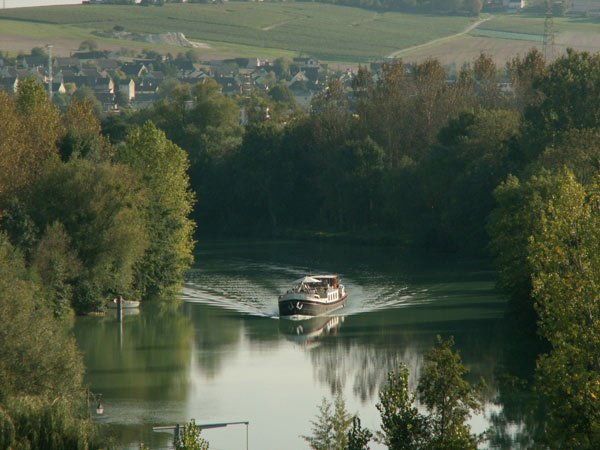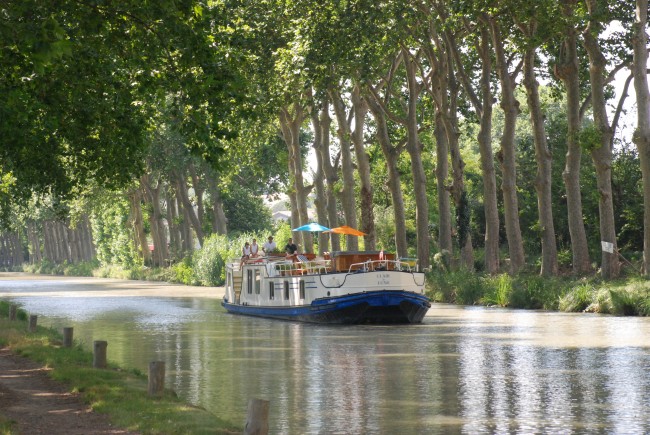
The French Canals, which serpent through the heart of France's oldest and largest wine regions have everlasting appeal.
Is there a better way to experience the French countryside, bursting in bloom in spring, shady in summer, and spendid in rich golds and reds during autumn, that from your own pricate barge, gently gliding along a canal, enjoying sumptuous foods, delicious wines and pleasant daily adventures.
HISTORY:
Early French canals were also built to connect river navigations. The first modern canal was the Briare-Montargis canal connecting the Seine and Loire, begun by Henri IV and completed by Richelieu in the reign of Louis XIII. It had 42 locks. The Orleans canal between the same rivers was begun in 1675 and completed during the minority of Louis XV, with 20 locks. The Picardy canal connected the Somme and the Oise. But the greatest French canal was the Languedoc Canal, or Canal du Midi, from the Atlantic to the Mediterranean across southern France, built 1666-1681, but first proposed under Francois I. It went from the Garonne near Toulouse to the Lac de Tau near Sète, 180 miles long, with 114 locks. There was a notable flight of 8 locks near Béziers, as well as a tunnel there 720 ft long lined with freestone, the first bored for navigation. The channel was 144 ft wide and 6 ft deep, sometimes carried in aqueducts on high bridges over rivers. The summit level, with 600 ft elevation at Narouse, was supplied from a reservoir and aqueduct at St Ferriol receiving its water from La Montaigne Noire. Francis Riquet was the engineer, and Colbert the minister. Its example stimulated the building of other European canals, possibly including the Duke of Bridgewater's canal of 1757.
